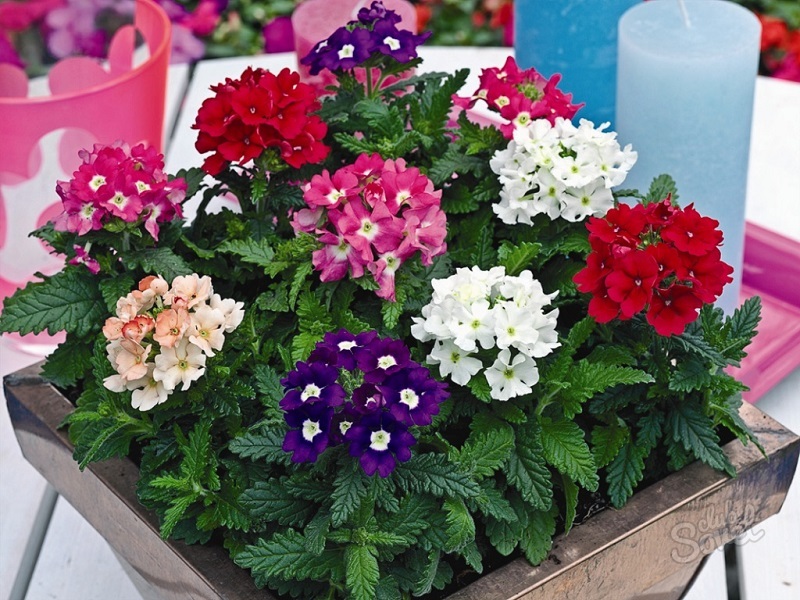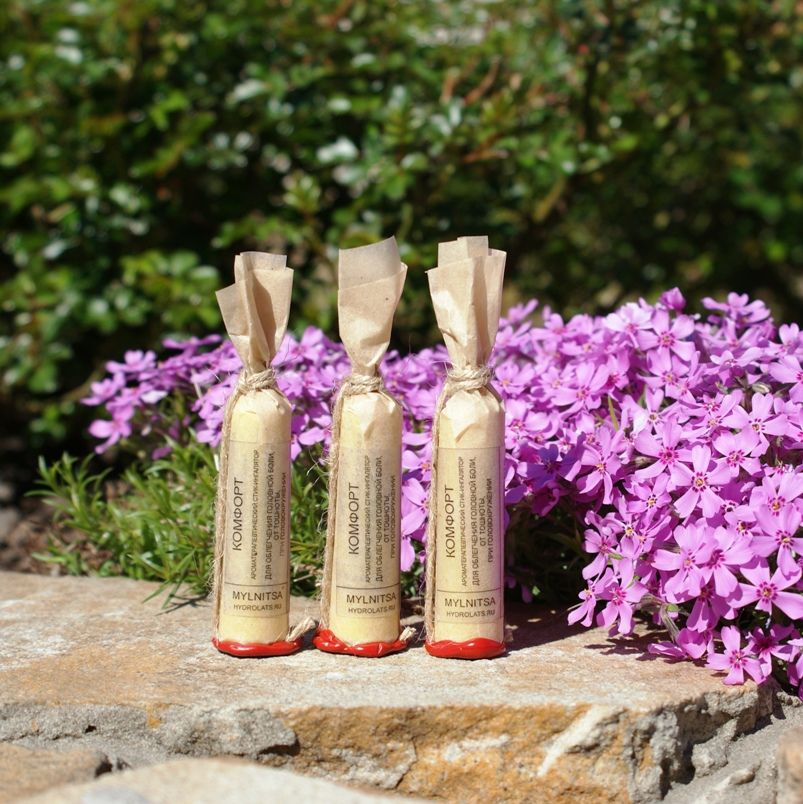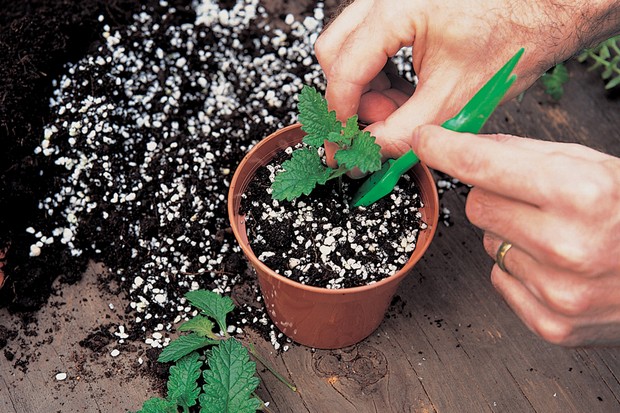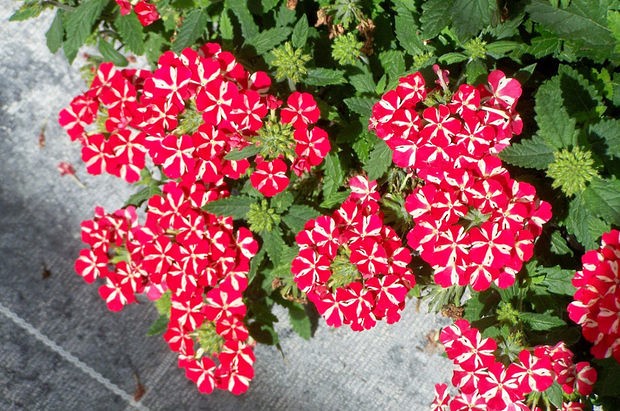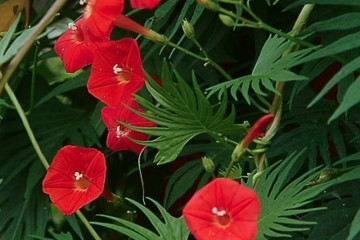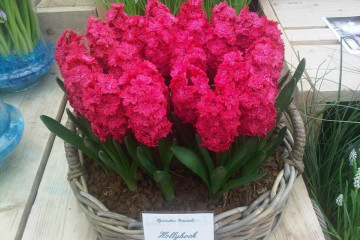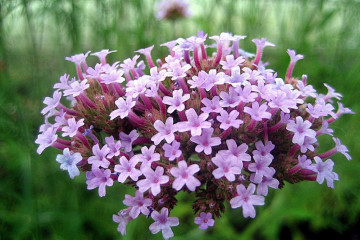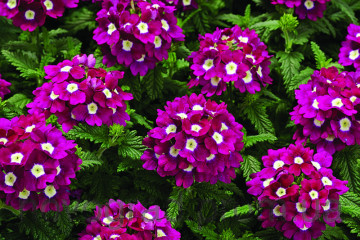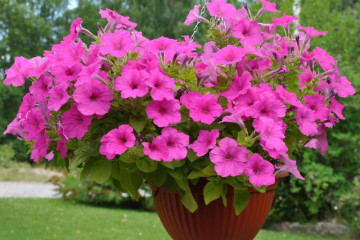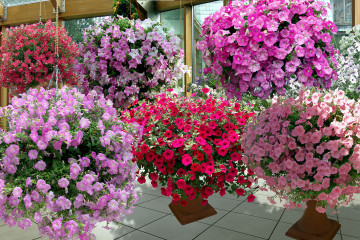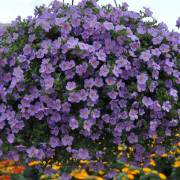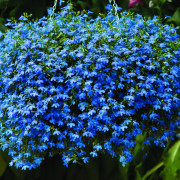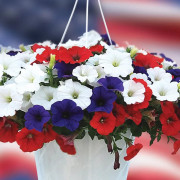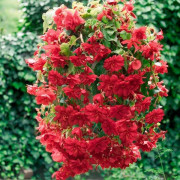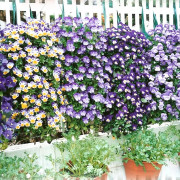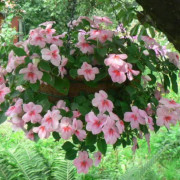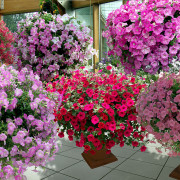Flowers verbena ampelous - perennial plant
Verbena is an ornamental culture, prized by gardeners for its rich color range and variety of species. The main favorite is the ampelous verbena - a bright, unpretentious variety. This herb can be found not only in the gardens of novice florists, but also in famous parks decorated by landscape designers.
Verbena history
The name of vervain is of Roman origin, known since the 18th century. It can be found in old books describing its healing properties. In different countries, there are stories in which the culture is called the tears of Isis, the vein of Venus, or the holy grass. According to Christian legend, vervain was first discovered on Mount Calvary, where Jesus Christ was crucified. She covered her wounds to stop the bleeding.
There are more than 250 species of this representative of the flora. Most of the ornamental varieties grow in the United States, on the continent from Chile to Canada. Medicinal herbs grow in Europe and the Far East.
Specifications:
- bush up to 40 cm high;
- buds of white, pink, blue flowers;
- corrugation leaves.
How the herb is used:
- for decorative purposes in floriculture: to create bright mono-compositions, alpine hills and borders;
- for stimulating appetite and stimulating gag reflexes in medicine;
- the roots are used in pickling cucumbers to give them a piquant aroma.
Perennial or annual?
The planting method depends on a number of features of this shrub, which are important to know before arranging a personal plot or garden. The rules of care also differ, depending on whether you need to sow new seedlings every year. Timely care will ensure lush and long-lasting blooms.
Verbena is a perennial representative of the flora that easily tolerates heat and short-term drought. However, the shrub is not frost-resistant, therefore in Russia it is considered one-year. It is rare to keep it in the fall until spring. This species is grown in pots and pots, on balconies and window sills. Verbena ampelous requires favorable conditions to survive the Russian winters. Gardeners usually buy seedlings at the start of the summer cottage season. Moreover, breeders each year bring out new flower hybrids, more adapted to Russian latitudes.
Before freezing, a bush with a lump of earth is dug up and transferred to a room with an air temperature of no higher than 10 ° C. It is a thermophilic culture that needs light. It is recommended to plant in an open area with free access to sunlight. In the shade, the shoots will stretch upward, and flowering will stop. In conditions of high humidity, there is a possibility of developing diseases that are dangerous for verbena.
Ampelny verbena varieties
In culture, only hybrid species obtained from crossing the best options are widespread. Varieties with bright red, blue and purple buds are especially popular.
- Tiara Red Imp. The variety is unpretentious in care, it is distinguished by lush and long flowering. The main advantage is resistance to drought and frost down to -3 ° С;
- Obsession Cascade. Creeping variety of seed propagation up to 20 cm high.Suitable for planting in a cascade in pots or planters with a diameter of 12 cm. Branches, does not require pinching. The plant has large inflorescences. The variety is resistant to powdery mildew;
- Verbena variety ampelnaya Image is an unpretentious cold-resistant variety. Suitable for both open ground and planters and hanging baskets. Possesses sprawling shoots and abundant flowering in the season from June to the first frost. Height up to 30 cm;
- Impres Peach. The cultivar is prized for its creamy color range and long flowering time. Shoots reach 50 cm in length;
- Estrela Voodoo Star. A distinctive feature of this species is its variegated large flowers. Especially popular is a lilac variety with white splashes. Does not require frequent irrigation with water;
- Amethyst is a compact culture up to 30 cm high. It blooms throughout the summer season: from June to September. Characteristic shade: blue petals with a white spot in the middle of the bud;
- Lanai Candy Kay. A new hybrid with large bright buds with white spots. Shoots up to 45 cm long. Flowering from spring to September.
Verbena in landscape design
Well-groomed representatives of the flora decorate parks, plots or flower beds. Another of their functions is the division of space into zones. Verbena is most often used to create flower arrangements and monoclumbus. The unique color and shape of the leaves allows it to contrast with other herbs. This is a bright accent on the site near the house.
Chameleon varieties are popular among designers, which begin to bloom three months after being placed in the ground. If the plants are planted at different times, the bright buds will adorn the flower beds for a longer period. You can create a panel of verbena or complement the compositions with other options.
Low-growing varieties of verbena are used to create green borders. High varieties are suitable for ennobling the middle of the flower bed. A classic decorative decoration of a private plot is a tandem with budleys and camellias. The ideal "neighbors" are marigolds, chamomile, delphinium, nivyanik and rudbeckia. With the mass planting of plants, you can achieve a bright colorful effect.
The cultivation of ampelous verbena hybrids was first started in the 19th century. Since then, it is one of the most popular flowers among gardeners. New seedlings are used for cultivation every year. This option is suitable for those who are looking for decoration of a flower bed, window sill or veranda. At the same time, the plant is unpretentious, resistant to heat and drought. Distinctive features are a wide range of colors and variety of species.
